|
|
|
|
|
|
Submitted by grh on 22. March 2009 - 20:45
|
Project Description:
stateX5.5 is a composition for baritone sax, cello, double bass, percussion, laptop, a conductor, 12 speakers spread over the room, live-electronic and an audience. It was created in summer 2004 within the project Morgensterne of the austrian newspaper Kleine Zeitung.
The composition was generated by a computer program, but played by "real" performers.
For a detailed description of the composition and the concept see the documentation section below.
Some impressions:
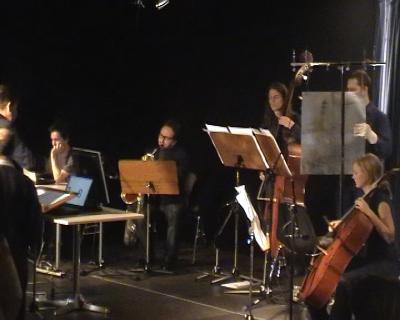 stateX5.5 ensemble stateX5.5 ensemble
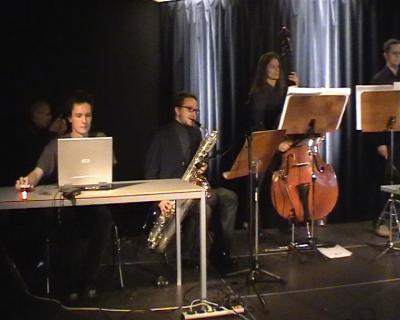 stateX5.5 left part stateX5.5 left part
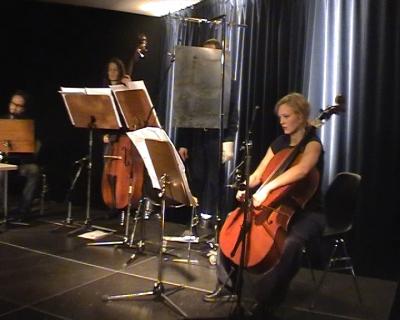 stateX5.5 right part stateX5.5 right part
|
|
|
|
|
|
|
|
|
|
Submitted by grh on 18. March 2009 - 20:08
|
Project Description:
streicherMODUL3 is an algorithmic composition.
The "building blocks" of the composition are groups of tones, which are looped. Every instruments plays one individual groups.
Now these groups are transformed: they get condensed, widened, different playing techniques, etc.
Additionally the 4 strings are out of tune against each other in eight tones - so a micro-tonal network arises.
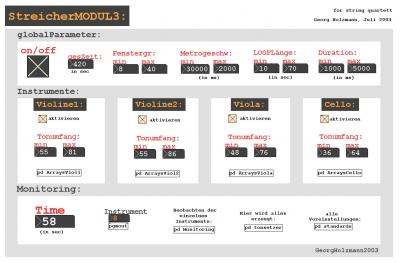 StreicherMODUL Bild 1: Interface of the composition engine StreicherMODUL Bild 1: Interface of the composition engine
The algorithms are implemented in PD.
All instruments are controlled via curves as shown in picture 2.
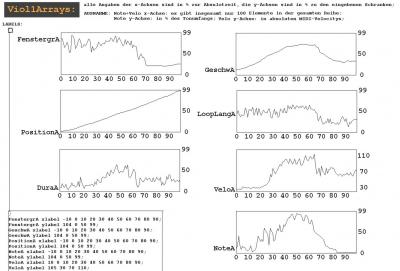 StreicherMODUL Bild 2: parameters of violin 1 StreicherMODUL Bild 2: parameters of violin 1
|
|
|
|
|
|
|
|
|
|
Submitted by grh on 18. March 2009 - 19:48
|
Authors:
Georg Holzmann (composition, computer)
Authors:
Thomas Orthaber (clarinet)
Project Description:
This piece consists of simple chains of sounds, which are growing and shrinking. But these chains are difficult to recognize, because the whole composition is cut up in small parts and assembled again like a puzzle.
Furthermore recorded and sometimes digital transformed samples of the clarinet are played back.
In 2klar the distinction and perception of the "real" and "faked" sounds is very important. Can we distinguish the "live"-clarinet from the recorded (and transformed) one ?
|
|
|
|
|
|
|
|
|
|
Submitted by grh on 17. March 2009 - 23:04
|
Project Description:
Very simple mathematical expressions are mapped onto the automatic piano (see picture), which can play all keys at the same time, fast repetitions etc.
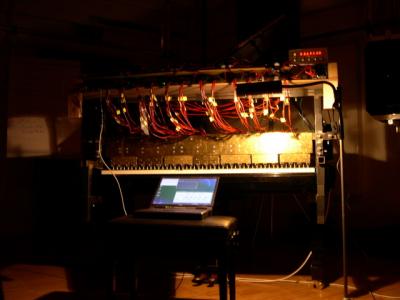 Gessler Piano Gessler Piano
frühling: consinsts of falling scales
sommer1: all keys of the piano are played at the same time, but each key with a different rhythm, which is a multiple of a prime number. So there are never two keys playing at exactly the same time.
sommer2: like sommer1, but now the lowest key has the slowest rhythm
winter: is a constantly "growing" cluster from one key to all 88 keys in a nearly constant rhythm. Afterwards the keys are released in the inverse order.
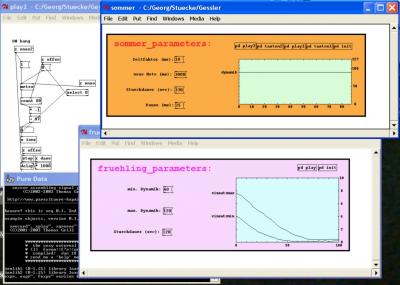 Gessler Patch Gessler Patch
The algorithms are realized within the open source software PD.
|
|
|
|
|
|
|
|
|
|
Submitted by grh on 15. March 2009 - 18:56
|
Project Description:
Quietsch (engl. grating) is a collage of very feared sounds.
But if you hear these "quietschers" for a longer time, you will recognize a lot of variations and maybe you'll start to fall in love with those strange sounds  ! !
|
|
|
|
|

|
|
 stateX5.5 ensemble
stateX5.5 ensemble stateX5.5 left part
stateX5.5 left part stateX5.5 right part
stateX5.5 right part




 !
!